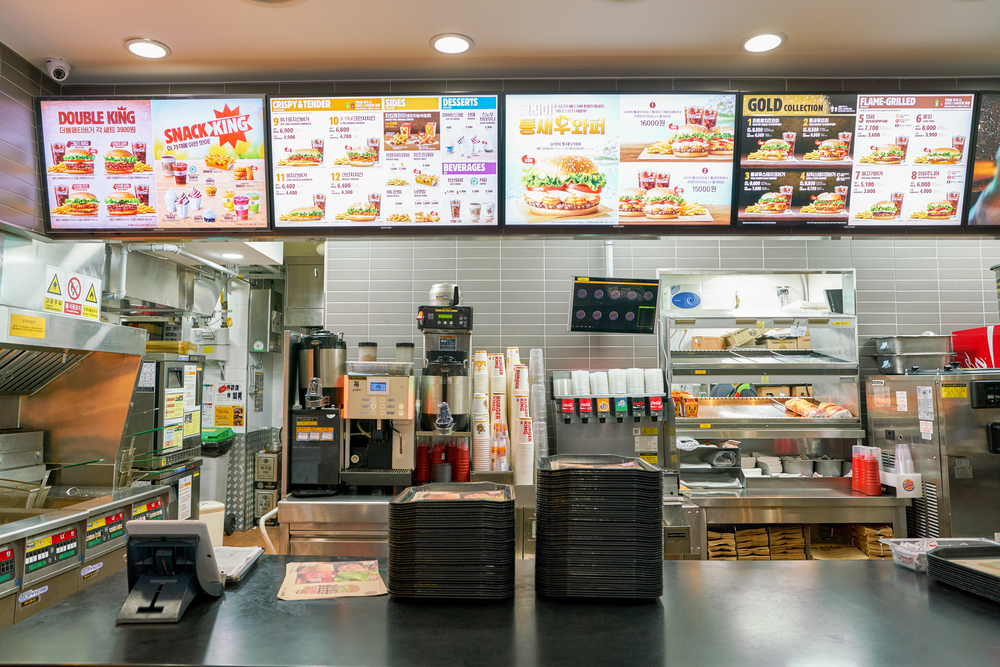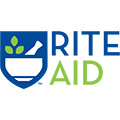As restaurants continue to embrace modern technology to enhance the dining experience, using a restaurant TV menu has become a popular solution for dynamic and visually engaging displays. TV-based menu boards are easy to update and offer a more flexible and cost-effective way to present your offerings compared to traditional printed menus.
In this guide, we’ll walk you through the key steps needed to turn a regular TV into a fully functional restaurant menu board, helping you boost your customer experience and streamline operations.

Why Use a TV Menu Board in Your Restaurant?
Before getting into the steps, it’s important to understand why digital TV menu boards are gaining traction in the food service industry. Digital signage offers several advantages over static menus, including:
- Flexibility: Easily update prices, daily specials, or seasonal offerings in real-time without reprinting.
- Enhanced Visual Appeal: Digital menus can showcase high-quality images, videos, or animations to highlight popular items and promote upselling.
- Cost-Effective: While there is an upfront investment in hardware and software, digital menus reduce long-term costs associated with printing and reprinting.
- Customer Engagement: Eye-catching visuals can capture attention and keep customers engaged while they decide on their orders.
Now, let’s consider the steps needed to create a restaurant TV menu that captivates your customers and enhances your operational efficiency.
Step One: Choose the Right TV for Your Menu Board
Not all TVs are created equal, and choosing the right one is essential to creating a professional-looking digital menu. Here are some factors to consider when selecting a TV for your menu board.
Screen Size
Your TV’s screen size should be proportionate to the viewing distance and the size of your restaurant. A small screen may not be visible from afar, while an oversized screen may overwhelm a small space. As a general rule, TVs between 42 and 55 inches work well for most restaurants, depending on the layout and seating arrangement.
Display Resolution
To ensure your menu items and images are clear and crisp, opt for a high-resolution TV. A 1080p Full HD display is typically sufficient for most menus, but if you’re showcasing high-definition videos or need extra clarity for intricate designs, consider a 4K display.
Mounting Options
Consider where the TV will be mounted and how it will be positioned for optimal viewing. Wall mounts are common in most restaurants, but some setups may require ceiling mounts or specialized brackets to angle the screen for maximum visibility.
Heavy-Duty Use
Go for commercial-grade screens that are designed to withstand long hours of operation and can handle the ambient lighting conditions of your restaurant. These screens offer better durability and typically come with warranties suitable for heavy use, ensuring they remain a reliable part of your setup for years.
Step Two: Select Digital Menu Board Software
Once you’ve chosen your TV, the next step is selecting the right digital menu board software. This software allows you to design, schedule, and manage the content displayed on your TV.
Cloud-Based or Local Software
Digital menu board software comes in two main types: cloud-based and local. Cloud-based software allows you to manage your menu from any location using an internet connection, while local software requires that changes be made directly on-site.
Cloud-based options offer more flexibility and are ideal for multi-location restaurants or establishments that frequently update their menus.
Key Features to Look for
When selecting software, make sure it includes the following features:
- Customizable Templates: Pre-designed templates make it easy to create professional-looking menus, even without design experience.
- Real-Time Updates: The ability to update your menu in real-time is important for flexibility, especially for restaurants that offer daily specials or change their offerings frequently.
- Scheduling Capabilities: This allows you to schedule different menus throughout the day (e.g. breakfast, lunch, and dinner) automatically.
- Media Integration: Ensure the software supports images, videos, and animations to create a dynamic and visually engaging menu.
Step Three: Design Your Digital Menu Layout
The layout of your digital menu plays a significant role in its effectiveness. A well-designed menu is easy to read and more likely to enhance customer experience by guiding them to key items. Learn how to create a successful layout below.
Organize Your Menu
Start by organizing your menu into logical categories, such as appetizers, main courses, drinks, and desserts. Make sure the most popular or profitable items are placed in prominent positions, such as the top left or center of the screen, as these are prime visual areas.
Use High-Quality Images and Videos
Visuals are a key advantage of digital menu boards, so make sure to use high-quality images of your dishes. Photos should be well-lit, appetizing, and realistic, as overly edited or unrealistic images can reduce customer trust.
Incorporating videos or animations can further enhance the menu, showcasing food preparation or highlighting seasonal promotions.
Maintain Brand Consistency
Your menu design should align with your restaurant’s overall branding, from the color scheme to the font selection. Maintaining consistency ensures that the digital menu reinforces your brand identity and creates a cohesive experience across all customer touchpoints.
Keep It Simple and Readable
Avoid cluttering your menu with too much information. Focus on key items, prices, and essential details, leaving enough white space for the menu to be easily readable. Use large, clear fonts, and avoid using too many different font styles, which can confuse the viewer.
Step Four: Install and Configure Your TV
Once your menu design is complete, it’s time to install and configure your TV. Here’s how to do it properly.
Mount the TV
Ensure your TV is securely mounted in a visible location where customers can easily view it. If using a wall mount, make sure it’s at eye level for customers standing at the counter or sitting at a table. If possible, angle the TV slightly downward to reduce glare and improve visibility.
Connect to a Media Player or Cloud-Based System
Most digital menu board software will require a media player to display the content on your TV. This media player is often a small device connected via HDMI that communicates with your software. If using cloud-based software, connect the TV to the internet for real-time updates.
Adjust Display Settings
Configure your TV’s display settings for optimal visibility. Set the brightness, contrast, and sharpness to levels that ensure the menu is clear in all lighting conditions. Consider enabling the TV’s “eco-mode” to prevent screen burn-in if your menu remains static for long periods.
Step Five: Keep Your Menu Updated
One of the key benefits of using a digital menu is the ease with which you can update it. Regular updates keep your menu fresh and make it easy to introduce new items, promote seasonal offerings, or highlight special deals.
Schedule Regular Updates
Set a schedule for when to update your menu, whether it’s daily, weekly, or seasonally. Cloud-based systems allow you to make quick changes and keep your menu up-to-date at all times without requiring additional time or effort.
Incorporate Specials and Promotions
Use your digital menu board to showcase limited-time offers, daily specials, or combo deals. This can help drive customer interest in specific items and encourage impulse purchases. Digital menu boards also allow you to easily rotate promotions, keeping them relevant and engaging.
Step Six: Enhance Customer Interaction with Dynamic Content
Beyond displaying static menu items, digital menu boards offer the opportunity to incorporate dynamic content that engages customers. Here are some ways to enhance customer interaction.
Display Social Media Feeds
Integrate live social media feeds into your digital menu board to showcase customer reviews, user-generated content, or restaurant updates. This can encourage customers to interact with your brand online, helping to build a community around your restaurant.
Include Live Entertainment Feeds
If your restaurant hosts live music or events, use your TV menu board to display upcoming performances or live footage. This adds a layer of entertainment value and encourages customers to return for future events.
Highlight Nutritional Information
With increasing customer interest in health and wellness, consider including nutritional information or highlighting healthier menu options on your digital board. This can cater to health-conscious customers and evoke a sense of transparency.
Step Seven: Monitor and Maintain Your Menu Board
Once your TV menu board is up and running, proper monitoring and maintenance will ensure it continues functioning optimally.
Monitor for Technical Issues
Check your menu board regularly for any technical issues, such as display malfunctions, lagging content, or connection problems. Keep your media player and software updated to prevent disruptions in service.
Gather Customer Feedback
Finally, gather feedback from your customers about their experience with the digital menu board. Is the menu clear and easy to read? Are they drawn to the images or videos? Use this feedback to make improvements and optimize the display to better serve your guests.
MTI Digital: Your Partner in Custom Digital Menu Solutions
Using a restaurant TV menu can elevate the dining experience, offering flexibility, cost savings, and a visually engaging way to present your menu. By following the above steps, you can successfully create a dynamic digital menu board that aligns with your restaurant’s brand and enhances customer interaction.
MTI Digital is adept at creating custom digital solutions for businesses like yours, helping you bring your restaurant TV menu vision to life. Transitioning to digital menu boards is a significant step for any restaurant. We offer tailored solutions designed to meet the unique needs of your business and seamlessly integrate into your current operations.
Whether you’re looking for dynamic digital signage, custom background music, or advanced in-store advertising solutions, we offer tailored services that enhance customer engagement and streamline operations. Contact us today to discover how our custom digital signage services can transform the dining experience in your restaurant.
 -
-